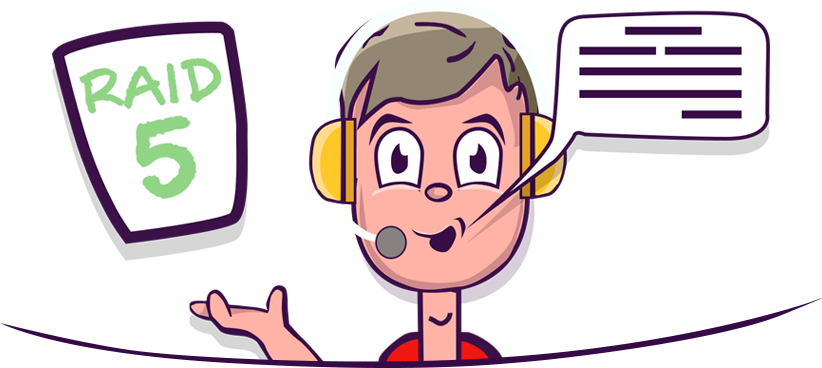
What is a RAID 5 volume?
RAID 5 is a redundant array of independent disks (RAID) that has been configured as a striped volume set with parity. RAID 5 consists of three or more drives and is treated as a single volume (i.e. it has one drive letter when mounted in a system).
What is parity?
Parity, or parity data, is what gives RAID 5 fault tolerance. Parity is data that is additional to the data that is being stored onto the disk. If one of the disks fails, the array can use the parity data combined with the data on the other disks in order to reconstruct the pieces of data that were on the failed disk.
What is the fault tolerance of RAID 5?
RAID 5 fault tolerance is 1. That is, one disk in a RAID 5 can fail and the array will still function. This is true no matter how many disks are in the RAID volume.
What are the advantages of RAID 5?
As mentioned above, RAID 5 offers both faster access to data and fault tolerance. In the real world, the advantage is that you can service your RAID 5 volume without interrupting service or availability of the data. The RAID 5 will also rebuild the lost data from the failed disk, which saves you the time of performing a data recovery operation and/or restoring from a backup during a hard disk failure. Rearing a RAID 5 that has entered into a critical state (one drive has failed) is relatively easy—the failed disk can be hot swapped out with a healthy disk without shutting down the RAID.
What are the disadvantages of RAID 5?
With a RAID 5, you are getting less bang for your buck in terms of data storage. That’s because the RAID needs to account for parity data, which is equal to the size of one of the member disks. Also note that the member disks in a RAID should be of the same capacity. While not a requirement, if you install a member disk that is a smaller capacity of the other disks, the RAID will treat the other disks as if they were the same capacity as that disk.
How do I retrieve data from a failed RAID 5?
RAID 5 is highly susceptible to user error. That is, while servicing a RAID 5 with one failed disk, the technician might remove the wrong disk (i.e. a healthy disk). This equates to having two failed disks in the RAID and the entire RAID fails. If you are lucky, you should be able to reinsert the disk and the RAID will rebuild itself. But if further misconfiguration occurs, the meta data could become corrupt or the data on the member disks could become corrupted. In these cases, it’s best to cease a “trial and error” approach and attempt to build the RAID 5 virtually. RAID 5 configurations tend to worsen when forced to mount with the wrong parameters, and by creating images of the healthy and damaged disks, you can attempt repairs without risking further data loss.
To proceed, begin by creating a sector-by-sector disk image of each member disk. Then, use a RAID retrieval utility to rebuild the RAID using the exact parameters of the original RAID. If you are not sure what these parameters are, check the RAID controller manufacturer’s website or read this tutorial on finding RAID parameters. Once you get the virtual RAID to mount properly, recover and backup data and start fresh on a new RAID volume.